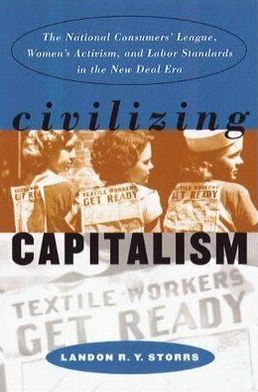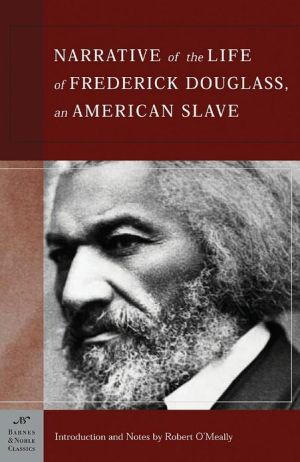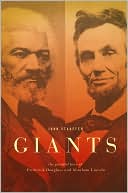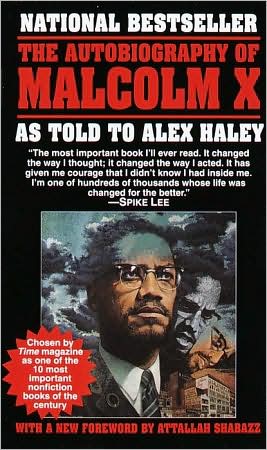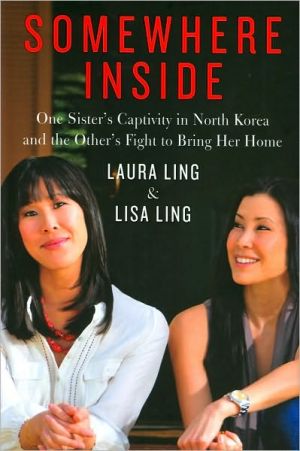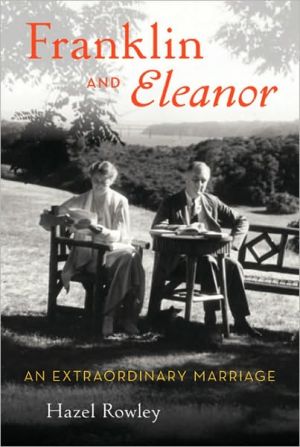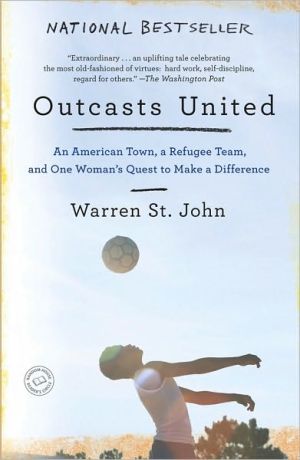Civilizing Capitalism: The National Consumers' League, Women's Activism and Labor Standards in the New Deal Era
Offering fresh insights into the history of labor policy, the New Deal, feminism, and southern politics, Landon Storrs examines the New Deal era of the National Consumers' League, one of the most influential reform organizations of the early twentieth century.\ Founded in 1899 by affluent women concerned about the exploitation of women wage earners, the National Consumers' League used a strategy of "ethical consumption" to spark a successful movement for state laws to reduce hours and...
Search in google:
Landon Storrs examines the New Deal era of the National Consumers' League, one of the most influential reform organizations of the early twentieth century. Her book offers fresh insights into the history of labor policy, the New Deal, feminism, and southern politics.
Civilizing Capitalism\ The National Consumers' League, Women's Activism, and Labor Standards in the New Deal Era \ \ By Landon R. Y. Storrs \ The University of North Carolina Press\ Copyright © 2000 University of North Carolina Press\ All right reserved.\ ISBN: 978-0-8078-2527-3 \ \ \ \ Introduction\ The sweatshop is back. In the United States and in foreign factories producing goods for American companies, there are workers who face the wage slavery and hazardous conditions that horrified reformers a century ago. Labor exploitation never disappeared, nor was it ever confined to "sweating," a specific practice usually associated with subcontracting in the garment industries. But reforms initiated in the turn-of-the-century period known as the Progressive Era and consolidated during the New Deal of the 1930s curbed the most egregious abuses of employees in American manufacturing for many decades. In the 1980s and 1990s, however, the weakening of the labor movement, budget cuts for regulatory agencies, and free trade policies blind to labor practices combined to permit a resurgence of the sweatshop and to spread its features to other kinds of workplaces. \ Fresh evidence of these developments surfaces regularly. In August 1995 a U.S. Department of Labor raid in southern California found seventy-two undocumented Thai workers, most of them women, who literally had been enslaved for as long as seven years. Kept behind barbed-wire fences under the eye of armed guards, they worked eighteen-hour days making clothes for major American manufacturers and retailers. In 1996 labor activists embarrassed television personality Kathie Lee Gifford by exposing human rights violations in the production of her Wal-Mart clothing line in Honduras and New York. American consumers expressed growing concern for the people who made their favorite clothes and sneakers. Basketball hero Michael Jordan was pressed to justify the endorsement of Nike shoes that earned him more in one year than Nike paid to its entire Indonesian workforce. Editorials and cartoons appeared at the expense of image-conscious corporations. (A typical cartoon, showing people crowded onto the embassy roof in Saigon with a helicopter overhead, read "Of course we want to leave.... We all work for Nike.") On college campuses around the nation, students staged sit-ins to demand that products bearing their school's name be made under humane conditions.\ This publicity stimulated various approaches to cleaning up labor abuses in global clothing production. In 1995 Secretary of Labor Robert Reich created a "white list" of companies with fair labor practices, an attempt to embarrass excluded companies. In 1997 a presidential task force proposed a voluntary international code of conduct for the apparel industries. This initiative, known as the Apparel Industry Partnership (AIP), produced an agreement in late 1998 that authorized employers who honor the AIP code to advertise their goods with a "No Sweat" label. It remains to be seen whether the AIP code will yield meaningful change, or whether it will be reduced to a public relations maneuver that merely obscures exploitation.\ This book is about an organization that links these current labor reform campaigns to those of a century ago. In the 1890s affluent women who were appalled by working women's reports of conditions in department stores founded the National Consumers' League (NCL). In the 1990s the NCL was a lead organization on President Clinton's antisweatshop task force. For many of the intervening decades, the NCL was at the heart of the nation's evolving reform tradition. This book tells the story of the National Consumers' League during the turbulent, experimental era of the New Deal. The league's history offers a lens through which to examine shifting intellectual currents and tactics in American social justice activism. Led by women and supported by both women and men, the Consumers' League attracted leading representatives of progressive, social democratic, and liberal thought. Yet remarkably little has been published on the league, least of all for the period after the 1920s, when it experienced a resurgence of influence and energy.\ The women of the NCL pioneered the tactic of using consumer pressure on employers to raise labor standards. Turn-of-the-century league activists promoted "white lists" of fair employers, soon widening their focus from retailers to include manufacturing and other occupations. As the movement for "ethical consumption" spread, league branches sprang up in cities across the country. Before long, however, the NCL recognized that the strategy of using public pressure to elicit voluntary compliance by employers had serious limitations. The reformers concluded that employers would have to be coerced, rather than persuaded, into fair labor practices.\ The NCL proceeded to coordinate a drive that by the early 1920s had built a substantial body of state labor legislation. The league is perhaps best known for its role in the 1908 Muller v. Oregon decision, in which the Supreme Court upheld a state maximum hours law for women just a few years after a similar law affecting men was found unconstitutional. The brief that the league prepared for lawyer Louis Brandeis made legal as well as labor history, because it argued from sociological data rather than from court precedent alone. The NCL drafted the nation's first minimum wage law, enacted in Massachusetts in 1912, and it spread the minimum wage movement to a dozen other states within a few years. The NCL's leader from 1899 to 1932, the feminist and socialist Florence Kelley, anchored a coalition that won the creation of federal labor agencies dedicated to women and children. Other achievements at the national level included minimum labor standards for goods produced under government contract during World War I and the Sheppard-Towner Maternity and Infancy Act of 1921. The league also spearheaded the opposition to the Equal Rights Amendment (ERA), beginning in the 1920s and continuing for many years. Sponsored by the National Woman's Party from 1923 on, the ERA would have invalidated women-only labor laws.\ Consumers' League women wanted to improve working conditions for all workers, but it was the low labor standards of women and the employment of children that outraged them most of all. Then as now, the most severely exploited workers were likely to be young or female, or both. Employers, unions, and family members treated female workers differently from male ones, and the combination of these discriminations and pressures often made women especially vulnerable to abuses in the workplace. Female wages typically were a fraction of male wages; women's unpaid domestic obligations on top of long paid hours of work left them less time for leisure and rest than men, on average; and it was not uncommon for supervisors to demand more subservience from female workers, not to mention sexual favors. Dire need, combined with lack of union support and employer expectations of submissiveness, undercut wage-earning women's ability to protest these injustices.\ Meanwhile, in response to nineteenth-century proscriptions on women's participation in public affairs, female reformers had carved out a niche by arguing that they, as women, had special sensibilities for protecting the vulnerable. This thinking resonated well into the twentieth century. In 1922, in the first flush of enthusiasm after women's enfranchisement, future NCL leader Lucy Mason claimed that "the instinct of women is for the conservation of life." Furthermore, Mason believed that women "have come into power and are directly able to shape legislation at a time when there is critical need of mitigating the pressure of <'the Iron Man' upon countless numbers of individuals." She meant that women would harness the forces of the machine age-which her metaphor cast as masculine-and channel them toward serving the many rather than the few. Significantly, Mason did not limit women reformers' agenda to women and children. The NCL program began with raising labor standards for women and prohibiting child labor, but it by no means ended there. Mason and many other league women believed their feminine perspective entitled them to authority over social policies affecting all members of society. It was up to women to "make business serve the community." For many decades, the Consumers' League attracted remarkable women who dedicated themselves to "civilizing" capitalism.\ The 1930s were exhilarating years for NCL activists, all the more so because they came after a decade of political and legal setbacks. The Great Depression gave new urgency to the question of the government's authority to regulate hours and wages. Those who could find jobs saw their wages slashed. In some occupations, the workday lengthened; in others, workers were "stretched out," or pressed to speed up the production process. Individual and collective efforts by workers to resist these changes were risky because the pool of replacement workers was deep. Also, manufacturers were increasingly willing to relocate toward cheaper labor. Even the threat to relocate could force concessions from workers, so the availability of low-cost labor in one place could drag down labor standards nationally.\ The Great Depression intensified what then was a fairly new problem of industry migration toward the low-cost labor of the U.S. South. The NCL's search for solutions to this problem is a major theme of this book, and one that resonates with contemporary dilemmas. Long before Ross Perot warned in 1992 that the North American Free Trade Agreement would produce "a giant sucking sound" as jobs were pulled across the U.S. national border, and long before the revelations of abuse in Asian factories and Caribbean Basin maquilas, NCL activists and allied forces tried to staunch the flow of jobs across state borders by raising labor standards in the southern states. This drive to crack the South's separate market of low-cost labor was one of the NCL's most important initiatives in the 1930s.\ In addition to analyzing the changing strategies and priorities of a group of extraordinary individuals, this book reconstructs the history of a specific public policy. In the 1930s wage-hour regulation was transformed from a state-level policy that affected women alone to a national policy extending to men and women alike. The NCL played a critical and hitherto unappreciated role in this transition. The league's tale offers a prime example of how attention to women, and to gender, enriches political and labor history.\ Labor standards policy has fallen through the cracks between political, labor, and welfare state history. Recent studies of the New Deal discuss wage-hour policy only in passing. This is partly because the Fair Labor Standards Act of 1938 does not fit neatly into prevailing schematics for the trajectory of the New Deal. Mirroring the priorities of many labor leaders in the first third of the century, labor historians of the 1930s generally focus on union organizing and collective bargaining policy. Meanwhile, the rich new literature on gender and New Deal welfare policy has concentrated on the Social Security Act of 1935 and its antecedents.\ Government regulation of labor standards forms a more important component of the American welfare state than the relatively thin scholarship on it might suggest. Labor standards law includes a myriad of regulations affecting workplace safety and sanitation, child labor, industrial homework, maximum hours, night work, and minimum wages. The emergence of these laws in the Progressive Era was tremendously significant, not only for their direct impact on workers, but also for their potent assault on the idea that government intervention in "private" relations between employer and employee was illegitimate. During the Great Depression the NCL stressed that minimum wage laws would promote economic recovery and reinvigorate American democracy by raising the purchasing power of the working class. As league thinkers noted, uniform labor standards could discourage industry migration and facilitate union organizing. More recently, opposing groups have debated whether raising the minimum wage increases unemployment (by making U.S. workers less competitive with lower-wage workers abroad) or reduces it (by making minimum wage work more attractive to welfare recipients). After the abolition in 1996 of the Aid to Families with Dependent Children program, the exemption of "workfare" recipients from the minimum wage triggered a significant protest movement. Thus today, as in the 1930s, wage-hour laws, collective bargaining policy, and public assistance programs are interdependent. But labor standards policy has received less attention from historians than these others.\ Scholars who take regulation of hours and wages as their central concern generally have focused on the period before 1923, the year of an important Supreme Court ruling against a women's minimum wage law. One early explanation for the emergence of labor standards regulation suggested that these laws were a natural outgrowth of the process of "modernization." This analysis was rejected by New Left historians who argued that this regulation was one aspect of a far-sighted capitalist program to co-opt worker self-organization and radicalism with ameliorative measures. New Left interpretations improved on earlier ones by demonstrating that social policy was a product of struggle, but, as feminist scholars soon pointed out, they all failed to explain why most early protective labor legislation applied to women but not to men.\ The earliest feminist interpretations argued that sex-based labor laws reinforced women's secondary status in the workforce and their economic dependence on men. These scholars assumed that male politicians, employers, and trade unions were the leading advocates of sex-based policy. The discovery of middle- and upper-class women's "state-building" activism in the Progressive Era superseded this view. Historians now recognize that female reformers were the chief architects of protective labor legislation for women, but their assessments of these reformers and their legacy diverge sharply. Kathryn Kish Sklar argues that, due to certain distinctive features of American politics, "gendered policies acted as a surrogate for class policies." That is, organized women accomplished through sex-based policies what in other countries was achieved by labor parties through class-based policies. Others describe advocates of women's labor laws as "maternalists" whose priority was protecting "motherhood." Theda Skocpol celebrates maternalism as a positive force that succeeded in winning necessary reforms where party politics (men's politics) had failed. Some have taken a dimmer view, arguing that maternalism was largely to blame for women's inequality in the welfare state. In the latter analysis, white women reformers sought to shore up an eroding sexual division of labor by imposing a race- and class-biased ideology of domesticity upon working women. These scholars charge the so-called maternalists with defining women's citizenship rights and obligations in terms of motherhood, creating a dichotomy between motherhood and wage work that forestalled generous day care and maternity leave policies, and delaying the extension of labor standards protection to men.\ The truncation of the literature on women's labor laws at 1923 is partially responsible for this bewildering range of interpretations. This periodization has obscured the NCL's work to raise labor standards in the South and to win national, male-inclusive regulation. Following the trajectory of NCL activism through the early 1940s yields a fresh assessment of the legacy of sex-based labor laws and a new picture of this reform engine. First, despite some real limitations, the league's sex-based strategy succeeded as an "entering wedge" for broadening governmental obligations to all workers. To give the most obvious example, in 1941 the Supreme Court upheld the sex-neutral Fair Labor Standards Act of 1938, which the NCL was instrumental in passing. Second, "maternalism"-whether used in the critical or celebratory sense-does not adequately capture the essence of the NCL program. Consumers' League activists might be considered maternalists in the sense that they used arguments about women's distinctive values to claim authority over public policy. But they were not maternalists in the way the term is often used, meaning bent on protecting an idealized vision of motherhood. Labeling the league "maternalist" misses the complexity of its social analysis and political program, in addition to obscuring its feminism. The New Deal era casts the commitment of NCL leaders to a federal system of labor standards regulation-and, more broadly, to a social democratic state-into high relief. Furthermore, these years saw the league build on its older ideas about the interconnectedness of all workers to conclude that racial inequality was the linchpin of the South's separate political economy, and that the unreformed South was blocking the path to American social democracy.\ (Continues...)\ \ \ \ \ Excerpted from Civilizing Capitalism by Landon R. Y. Storrs Copyright © 2000 by University of North Carolina Press. Excerpted by permission.\ All rights reserved. No part of this excerpt may be reproduced or reprinted without permission in writing from the publisher.\ Excerpts are provided by Dial-A-Book Inc. solely for the personal use of visitors to this web site. \ \
ContentsAcknowledgments Abbreviations Introduction1. Investigate, Agitate, Legislate: The National Consumers' League2. Toward Feminist Social Democracy: The Entering Wedge Strategy 3. A Subtle Program Come Down from the North?: The Consumers' League Develops a Southern Strategy 4. The Acid Test of the New Deal: The National Recovery Administration, 1933-1935 5. Bucking the Bourbons: Lucy Mason Organizes for the Consumers' League in the South 6. Agents of the New Deal: Consumers' League Women Campaign in Virginia, South Carolina, and Kentucky 7. Ambiguous Victory: The Fair Labor Standards Act of 1938 8. Reaction: The Consumers' League Program under Attack 9. Always Democracy: The Consumers' League in the Post-New Deal Era Conclusion Appendix 1. National Consumers' League Officers, 1933 and 1941 Appendix 2. Biographical Data on Fifty Consumers' League Activists in the 1930s Appendix 3. Selected Landmarks in the History of Labor Standards Regulation Notes Bibliography Index IllustrationsWomen factory inspectors, 1914 Frances Perkins and Franklin D. Roosevelt, 1943 The NCL expresses its opinion of the Adkins v. Children's Hospital ruling, 1923 Textile workers struggle with a National Guardsman in Gastonia, North Carolina, 1929 Lucy Randolph Mason, ca. 1920s Josephine Casey on the cover of Equal Rights, 1931 Josephine Roche and John L. Lewis, 1936 New York City garment workers declare their determination to enforce NRA codes, ca. 1934 Women's Advisory Committee on the NRA coat and suit code, 1934 Clara Beyer, ca. 1931 Gastonia, North Carolina, textile strikers celebrate Labor Day, 1934 Gastonia, North Carolina, strikers wear posters demanding enforcement of the textile industry's NRA code, 1934 Women at work in a Louisville, Kentucky, garment factory, 1942 Anna Settle and Annie Halleck, 1941 "Southern solons band to fight wage-hour measure," 1938 Lucy Mason testifies at the Black-Connery bill hearings, 1937 Italian women packing asparagus in Pennsylvania, 1941 Elinore Herrick, 1937 Mary Dublin, ca. 1938 Eveline Burns, 1943
\ From the PublisherStorrs's evaluations of historiographical arguments . . . are extremely valuable, particularly to the non-specialist.\ Journal of Women's History\ Civilizing Capitalism convincingly shows the complex, frustrating, and ultimately inadequate development of federal labor regulation during the 1930s.\ Journal of American History\ [Provides] fruitful and original analyses of the relations among women's political movements and consumption.\ Reviews in American History\ [An] expertly researched and richly woven history.\ American Historical Review\ [A] clearly written and deeply researched book.\ Enterprise & Society\ \ \
